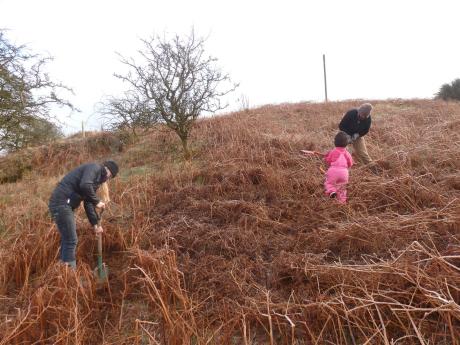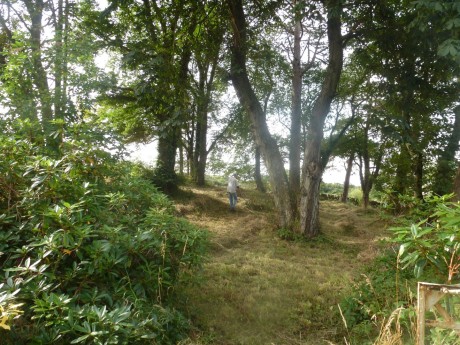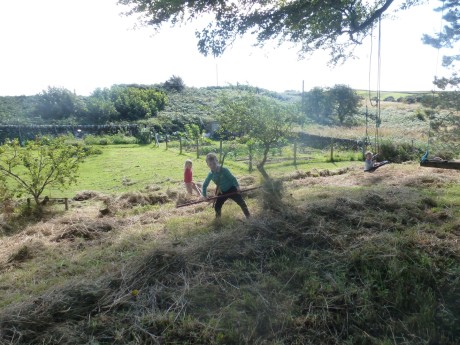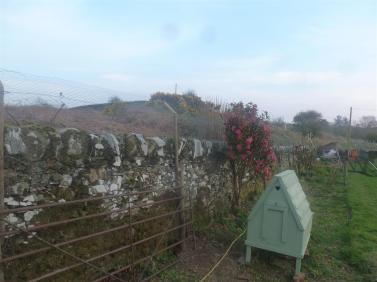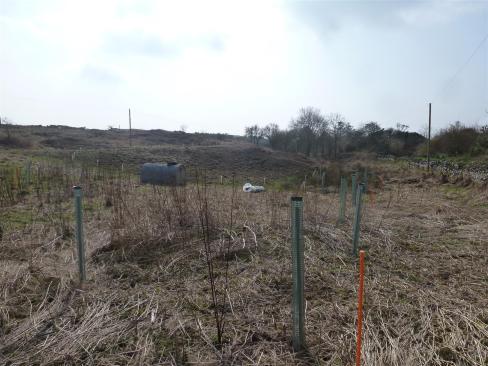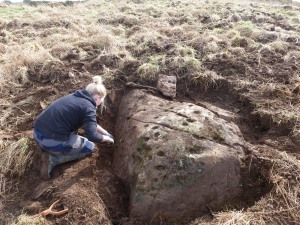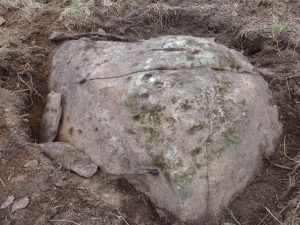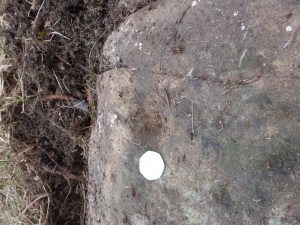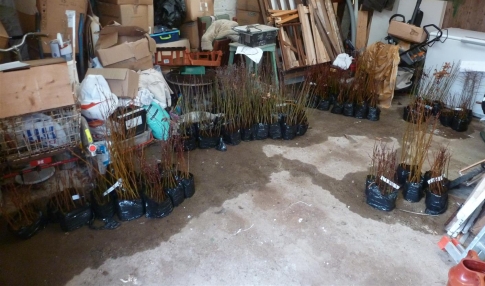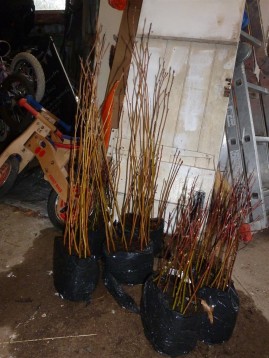Today was the day to take the pigs to Lockerbie abattoir; Thursday is pig day so all the pigs from across the region that are ready for slaughter are sent at once. We were meant to go last week, but the cold weather in the preceding weeks meant that few pigs made it to the abattoir and as a result it was fully booked.
In preparation for the move, we built a temporary area of fencing by the gate (with electric fence netting) and fed the pigs in there every day. We didn’t feed them the evening before the move to improve their receptiveness to following the bucket.
Our driver arrived with the trailer at 7.30am and we had until 8.30am to load our pigs in, Lockerbie being 90 minutes away when towing a trailer and the abattoir closes its gates for new arrivals at 10am. As I’ll describe, the deadline meant a bit more stress towards the end for us and the pigs.
My first mistake was to drop food in a couple of spots away from the gate. This meant the pigs wandered off at a few points to return to those spots to finish up the food. I intended them to stay away from the gate while the trailer was coming in, but ended up giving them some comfort zones to go to when they decided they weren’t bothered about walking up the ramp into the trailer.
I’m using this post as a place to note things I’ll change if we do this again and this is the first one:
1. Put food only in the place you want the pigs to stay for the duration of loading. For example, in the area by the gate, on the ramp and in the trailer.
When the pigs did come to the bottom of the ramp, they were obviously suspicious of it. It’s made of shiny, hard metal and even with the gripper treads on it, they didn’t like the slippery effect it had. I sat in the trailer for a bit with the bucket of food, which didn’t seem enough to get them up the ramp and they wandered off to the other bits of food lying about.
2. Improve the appearance and feel of the ramp. Use bracken, carpet or turf to cover the ramp so the pigs are more comfortable walking up it.
I got them back to the bottom of the ramp for a repeat of the above. We were running out of time, so we resorted to guidance and pushing with pig boards, using the gate as a crush to stop the pigs escaping backwards. This latter tactic was needed because the electric fence netting was totally inadequate at keeping them in by now (not power in it for everyone’s safety).
3. Build a proper stock handling area at the gate or work out a way to build one temporarily for moving animals into trailers. The proper version would involve moving the big gate onto new gate posts and installing two smaller gates to act as a funnel into a trailer. We’d then run post-and-rail down the sides to keep the animals in. The temporary one would use stobs and hurdles with boards at the bottom to create a pen.
We did get one pig into the trailer and she was very happy munching on her food. It wasn’t so bad after all. The other one kept ducking under the gate, because the ground slopes away from the gate and the pigs had dug it lower still. It didn’t seem possible that a pig would fit under, but she did.
After quite a few attempts the second pig got very wary and would hardly come close to even be in range of a good shove. She would come up to individuals and have a tickle or a rub; any indication that someone was approaching her from behind or the side and she dashed off. Slightly wild suggestions were being put forward at this point, such as getting a person at each leg and manhandling her into the trailer (not so outlandish as I thought; I’ve since heard a story about a pig in Portugal where the pig was grabbed by a group and bodily taken to slaughter). She just wouldn’t get close enough for that.
4. Be more patient. Spend more time coaxing and soothing the pigs. Not easy when there’s a looming deadline. Shoving pigs about didn’t sit well with the approach we’d taken up until then.
It was getting a little stressful by this point, so I decided to take one pig to the abattoir and leave the other behind. This was pretty upsetting, thinking of the lonely pig by herself in the field for a week. The other alternative was to leave both pigs until next Thursday and try again. I couldn’t face more of this and resolved that one slaughtered at the abattoir for sale and one slaughtered at home for our use would be the best, least stressful solution. Our neighbour came down towards the end and confirmed his view that home slaughter is by far the best way to do it and that this was the right choice. I felt slightly better.
On the way to the abattoir our driver recommended a home slaughterman, who I phoned right then. He said he could come next Thursday, so that’s what we’ll do. We’ll do lots of jobs in the field to keep pig number two company and get by.
The abattoir itself was full of large, rough pigs, some of whom had docked tails and scars from intensive housing. Our pig had a big pen to herself and plenty of straw, which seemed pretty decent to me. Many of the pigs got better housing in the abattoir than on their farms I suspect. I said my goodbyes and left, still thinking of the pig we’d left behind in the field; this was the worst part for sure. Our wwoofer Stephanie, a vegetarian, bravely came with us and summarised her trip as “Not my favourite day.” She does now know her enemy and can’t say that her wwoofing trip wasn’t eventful.
One final thought about the trailer, which is maybe not compatible with a stock-handling system:
5. Get the trailer into the field and feed the pigs in it for a couple of days beforehand. This is recommended by lots of people and in lots of books; we couldn’t do this because someone else was bringing the trailer on the day.


